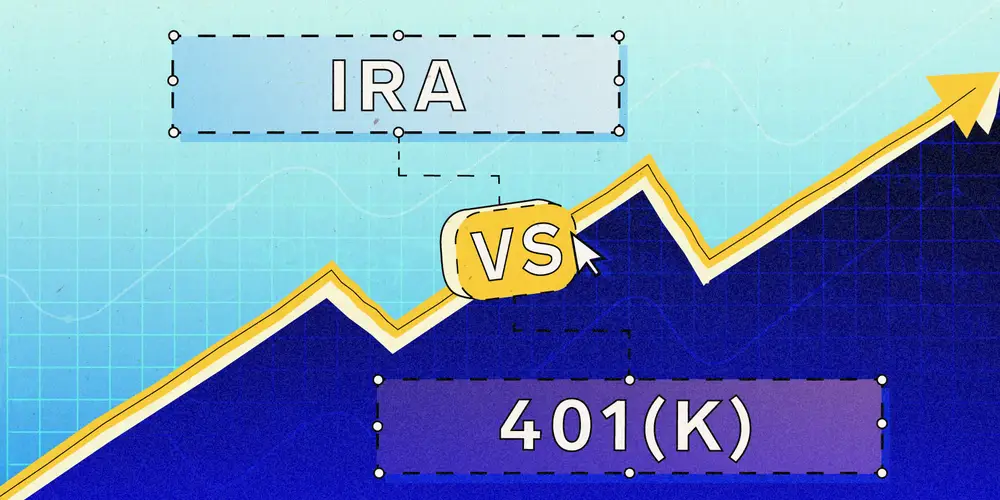Embarking on the journey of retirement planning reveals a fork in the road where individuals must choose between an IRA vs 401(k). Individual Retirement Accounts (IRAs) and 401(okay) plans are pivotal components of any holistic retirement approach. Each account kind contains particular characteristics, regulations, and advantages that may impact one’s monetary trajectory toward a stable and prosperous retirement.
Understanding the Basics
At their core, IRAs and 401(k)s serve as conduits for retirement financial savings. Where IRAs offer a certain charm with their giant array of investment alternatives, 401(k) plans are regularly lauded for their simple, extra hands-off investment choices along the capability for agency-matched contributions. Choosing between an IRA and a 401(k) can echo during one’s retirement making plans section, as a consequence mandating a thoughtful analysis of each options.
Dissecting Tax Implications
One of the most big factors distinguishing IRAs from 401(ok)s is the divergent tax remedy they receive. Traditional IRAs can also decrease your taxable profits via tax-deferred contributions, reaping instantaneous tax remedy, whereas Roth IRAs promise tax-free income in the course of retirement. Likewise, 401(k) plans come in traditional and Roth formats, paving the way for tailored tax planning. Such strategic tax considerations can profoundly influence the growth potential of your retirement savings.
Contribution Limits Examined
The IRS delineates clear thresholds for contributions to each retirement plan type. As rules and limits evolve, individuals should reassess their contributions to IRAs and 401(k)s annually. Consistently contributing up to the allowable limit of a 401(k) plan, especially with higher contribution caps, can significantly bolster one’s retirement reserves, more so when combined with matching contributions, which function akin to an additional income stream devoted solely to your future self.
Investment Options Compared
An IRA’s autonomy in selecting investments can catalyze a more adept investor to create a customized, diversified portfolio. In contrast, the predefined selection within a 401(k) allows employees to invest without the burden of excessive decision-making. Choosing between the extensive variety offered by an IRA and the curated 401(k) list rests upon one’s investment knowledge, time for research, and preferred level of involvement.
Rollovers and Consolidations
Life’s ever-changing nature often necessitates transferring retirement funds due to job changes or strategic financial realignment. Understanding the fine print tied to rollovers — especially the subtleties surrounding the IRA rollover protocols versus those of a 401(k) — is equivalent to leveraging these moves for your benefit. A misstep can inadvertently lead to tax consequences, diluting the efficacy of your retirement-saving endeavors.
Navigating Early Withdrawals
Both retirement plans incorporate disincentives for premature fund access to encourage savings discipline among account holders. At the same time, penalties are imposed for early withdrawals, and exceptions exist — such as for education expenses or a first-time home purchase — that can justify tapping into these savings. Account holders must fully grasp these rules to avoid financial setbacks and ascertain when such actions might align with broader life goals.
Legal Protections
The blanket of protections under the Employee Retirement Income Security Act (ERISA) overspreads 401(k) but does not extend to IRAs. ERISA statutes enforce fiduciary standards and offer safeguards against creditors, thereby bolstering the security of 401(k) assets. This fundamental difference in oversight and protection could be a determining factor for individuals especially concerned with the stability and integrity of their retirement funds.
Making Personalized Decisions
Whether an IRA or a 401(k) is better suited to an individual’s retirement strategy requires meticulous contemplation of personal income, employer benefits, investment preferences, and future financial goals. Integrating an understanding of each retirement account’s offerings with one’s fiscal situation clears the path toward an informed, deliberate choice synergistic with personal retirement aspirations.
The Importance of Staying Informed
To adeptly navigate retirement planning, one must stay informed about the latest developments in the financial industry. Insights into how Americans manage their retirement savings, as reported by CNBC, and statistical data such as average 401(k) savings across different age brackets provided by Investopedia, enable individuals to benchmark their progress and reassess their saving strategies to remain aligned with best practices and optimal financial outcomes.
Key Takeaways
- IRAs and 401(k)s offer unique tax advantages that cater to different financial strategies.
- The right choice between an IRA and a 401(k) depends on individual circumstances, such as income level, employer offerings, and retirement goals.
- Understanding the features and limitations of each plan is crucial for effective long-term retirement planning.
Final Thoughts
The roadmap to retirement is covered with choice factors wherein the selections made, inclusive of electing among an IRA and a 401(ok), may have lasting influences on economic nicely-being. A thorough comprehension of each plan’s specific characteristics and a forward-thinking method formulates the bedrock of a steady retirement. The key to this enterprise is starting early and ensuring that each step taken is accomplished with a clean information of how it contributes to the ultimate goal of monetary serenity in later years.


